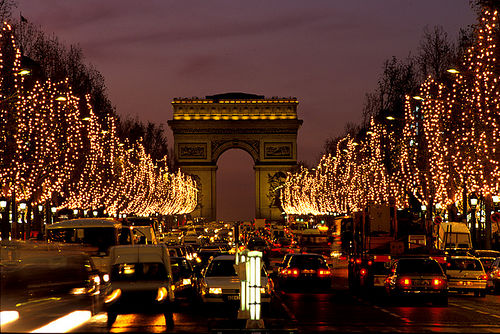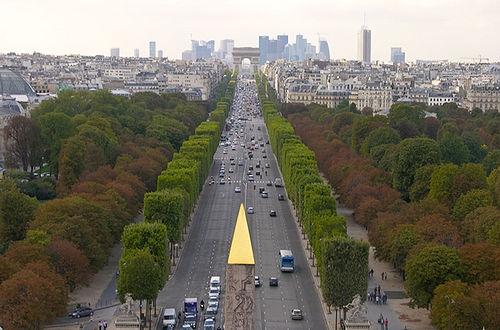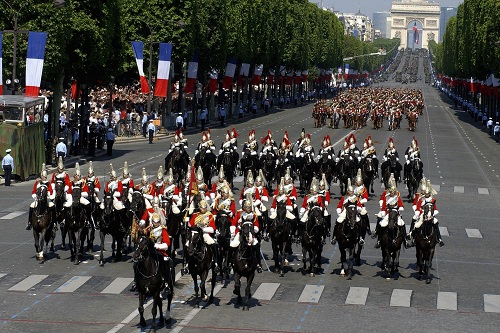Welcome to Champs Elysees – the most prestigious and overrated avenue in Paris that links one end of the city to the other! Stretching from the Place de la Concorde and making its way to the Arc de Triomphe, Champs Elysees, meaning ‘Elysian Fields’ in English are as heavenly as their name suggests and symbolize the style and ‘joie de vivre’ of the City of Lights. Magnificent restaurants and dozens of sidewalk cafeterias, lush gardens, luxury specialty stores, cinema halls and stunning elegant accommodation options surround this exclusive avenue, making it a popular street among the rich and famous. Champs Elysees becomes brighter and more beautiful especially at Christmas when it’s like a scene from a movie. This prosperous stretch of land is a gathering place without parallel!
Originally, Champs Elysees was nothing but fields and market gardens until 1616, when Marie de Médécis – the queen consort of France, decided to extend the gardens by putting up a long tree-lined pathway. Later a variety of kings and architects developed the prominence of the avenue. In 1724, the Tuileries garden axis and the avenue were connected and extended reaching beyond the Place de I’Etoile. Already in 1828, Champs Elysees became the property of Paris and the atmosphere of the garden started to change little by little. The avenue became more attractive under the reign of the Emperor Napoleon III, who added many fountains, footpaths, as well as gas lighting. The construction of the grand Roman-inspiring building of Arc de Triomphe finished in 1836. Since then, Champs Elysees continues to grow, gradually becoming what we see it today.
Did You Know?
- The current name of the avenue was adopted in the 18th century (1709), however, Champs Elysees is nowadays also known as ‘la plus belle avenue du monde,’ which means ‘the most beautiful avenue in the world.’
- The Champs Elysees neighborhood is located in the city’s ritzy 8th Arrondissement, with the wondrous Tuileries Gardens and adjoining Louvre Museum nestled to the east and the Arc de Triomphe to the western edge of the district.
- In Greek mythology, Champs Elysees was the location in the ‘paradise,’ where heroes and virtuous souls rest after death.
- The avenue is more than 1,900 meters long and 70 meters wide.
- The first 750 meters (2,500 feet) of the road is occupied by the spectacularly beautiful lush green Gardens of Champs Elysees divided in rectangular areas called ‘Carrés’ (squares).
- Champs Elysees is the first most expensive strip of real estate in Europe and the 2nd in the world after New York City’s 5th Avenue.
- The first city sidewalks on the Champs Elysees were built in 1828.
- One of the streets to the south of Champs Elysees, the world-famous avenue Montaigne is found with its wealth of designer shops, like Prada, Dior and Chanel.
- For a long time Champs Elysees has faced some of France’s greatest cultural celebrations, including the annual World’s Fair in 1855. Since 1970, the fascinating avenue has been the site of Tour de France’s final stage, where the winner bicycles are greeted by crowds of cheering people and the award ceremony takes place.
Visited by every tourist who comes to Paris, Champs Elysees offers a unique aura no other boulevard can equal!





